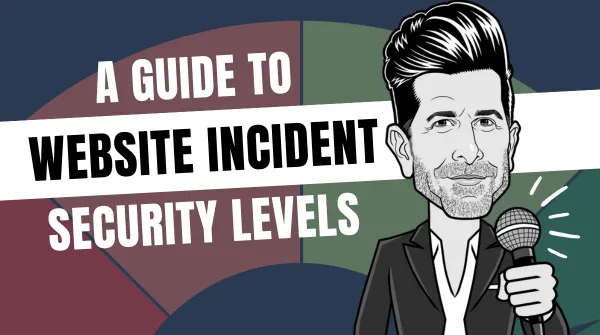A Guide to Website Incident Severity Levels

Understanding the severity of incidents on a website is crucial for maintaining online operations and ensuring minimal disruption to users and business processes. This guide outlines the four levels of incident severity, providing a framework for project managers, web developers, and business owners to effectively categorize and respond to issues. By the end of this article, you’ll be well-equipped to handle website incidents with the appropriate level of urgency and precision.
Understanding Incident Severity Levels
Incidents are unplanned disruptions or reductions in quality of a website’s service. They can range from minor glitches to significant outages. Severity levels are a classification system used to prioritize incidents based on their impact on the business and the users. A well-defined severity level system is essential for efficient incident response and management, ensuring that the most critical issues are addressed first.

Severity Level 1: Critical
Severity Level 1 incidents are critical and require immediate action. These are situations where the website is down, or there’s a significant security breach posing immediate risk. The response to such incidents must be swift and effective, often requiring the mobilization of an entire project management team to mitigate the damage, restore services, and communicate with stakeholders.
Examples:
- Payment Gateway Failure: The 3rd party system handling payments is down or not processing transactions.
- Shipping Integration Breakdown: Customers can’t get shipping rates or choose shipping options because of a malfunction with the 3rd party shipping integration.
- Security Plugin Breach: A security-related 3rd party plugin is compromised, putting user data at risk.

Severity Level 2: High
A Severity Level 2 incident has a high impact on business operations but is not as immediately destructive as Level 1. These could include major functionality issues or security vulnerabilities that must be addressed promptly to prevent escalation. Technical teams, especially those involved in web development, play a critical role in resolving these high-severity incidents.
Examples:
- CRM Integration Issues: Customer data isn’t syncing correctly between the website and the 3rd party Customer Relationship Management system.
- Email Marketing Tool Disruption: Automated emails, such as order confirmations or marketing campaigns, are not being sent because of issues with the 3rd party email tool.
- Review System Malfunction: If you’re using a 3rd party product review system, and it’s not displaying reviews or allowing new ones.

Severity Level 3: Moderate
Moderate Severity 3 incidents may cause partial disruption of services or minor security concerns. These issues require a timely response, with a focus on thorough investigation and resolution to prevent future occurrences. Integrating robust website design services can often preempt such incidents by ensuring that the website is well-constructed and resilient against common faults.
Examples:
- Analytics Downtime: Tools like Google Analytics or other 3rd party analytics platforms are not recording data, but this doesn’t directly affect customer experience on the site.
- Social Media Feed Issues: If you display social media feeds on your site, they might not be updating or showing correctly.
- Affiliate Tracking Disruptions: Affiliate links or tracking might not be registering, but overall website functionality remains.

Severity Level 4: Low
Severity Level 4 incidents are low-impact and often pertain to non-critical bugs or cosmetic issues. These are typically resolved through regular maintenance processes without the need for immediate action. However, tracking and managing these low-severity incidents is still important for overall quality assurance.
Examples:
- Layout Issues with Widgets: Minor visual disruptions related to 3rd party widgets or plugins.
- Delayed Updates: A 3rd party service’s content or data might be outdated but isn’t crucial for immediate operations.
Best Practices for Managing Incident Severities
Managing incidents effectively requires a clear set of best practices. These include establishing a well-trained response team, creating detailed incident response plans, and conducting regular reviews of incident handling procedures. Effective communication channels and documentation are also key components of a robust incident management strategy.
Conclusion
By understanding and applying these incident severity levels, your team can respond to website issues with appropriate urgency and precision. Implementing a clear severity level system is essential for efficient website incident management and maintaining high-quality online services.



Leave a Reply
Want to join the discussion?Feel free to contribute!